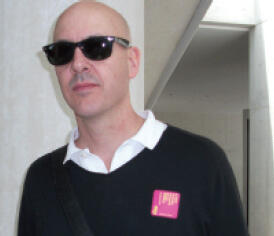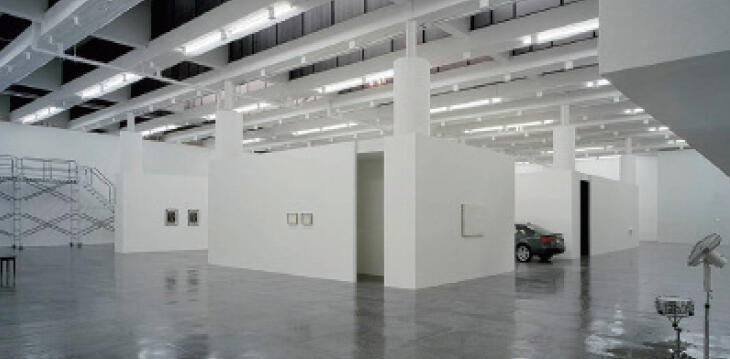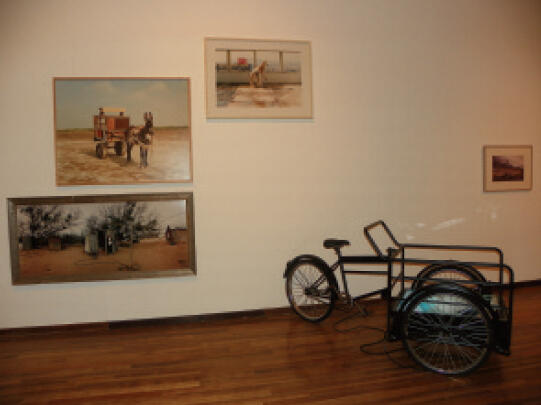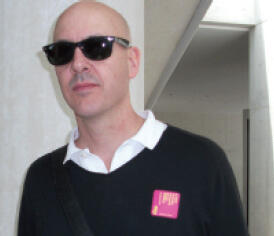Patrick Charpenel: New Director of the Jumex Museum
In 2002, curators Patrick Charpenel Corvera, born in Mexico, and Silvia K. Cubiñá, born in Puerto Rico, worked together in an exhibition entitled Interplay, presented at The Moore Space in Miami, as part of the projects coinciding with the launching of Art Basel Miami Beach.

They had not met, but Rosa de la Cruz and Craig Robins, who had conceptualized and founded that alternative space, challenged them to work together in an exhibition that would make it possible to feature artists from Miami and international artists in the same context. Interplay then traveled to the Puerto Rico Museum of Art. A decade later, as a result of the appointment of Charpenel as director of the Jumex Collection, one of the best consolidated – and influential – collections of international art in Latin America, Cubiñá, current Executive Director and Chief Curator at the Bass Museum of Art in Miami Beach, interviews him, inaugurating our section From curator to curator.
Charpenel obtained his Master’s Degree in Philosophy from the University of Guadalajara, the city where he was born in 1967. He has curated projects such as The Architecture of Tatiana Bilbao 2004-2010 (Mexican Cultural Institute, San Antonio, Texas), Art Projects (Art Basel Miami Beach, 2009), Elefante blanco, Franz West’s solo show at the Tamayo Museum of Contemporary Art, Mexico FD. He has also curated solo shows by Mexican artists in different museums in the city: Fernando Ortega (University Museum of Science and Art, Mexico City, MUCA campus, Mexico, F.D., 2008), and Gabriel Orozco (Museum of the National Palace of Fine Arts, 2005).
For her part, from 2002 until 2008, Silvia Karman directed The Moore Space, Miami, where she organized exhibition projects with artists such as Allora & Calzadilla, Carlos Amorales, John Bock, Jeppe Hein, Jonathan Monk, Aida Ruilova, Hernan Bas, Jim Lambie, Joan Jonas, and Yang Fudong, among others. She also curated French Kissing in the USA, featuring the panorama of emerging French art. She collaborated in exhibitions such as the one presented by Javier Cambre in the Whitney Museum of American Art Biennial in 2002, and she was Puerto Rico’s curator for the 1997 Sao Paulo Biennial. In 2007, she was a finalist for the Walter Hopps Award for Curatorial Achievement. She was also a fellow at the Center for Curatorial Leadership in Nueva York.
Before anything else, congratulations on your appointment as Director of the Jumex Museum. When do you expect the Museum to be inaugurated?
Thank you for your words of support. We shall settle down at the new Polanco space by the end of the year. However, we will be inaugurating our activities and exhibitions only about the middle of the year 2013.
I am aware of the fact that you have spent a long time planning every detail of the new museum building, designed by architect David Chipperfield. Could you give us an idea about some of those details?
The new building of the Fundación / Colección Jumex is precise and very elegant. It is not a big museum, since it only covers an area of 4000 square meters, with 2000 square meters of galleries. A 1000-square-meter floor will be devoted to workshops, the educational program, lectures and film projections. The ground floor will house the lobby, a bookstore-shop, and a restaurant. It has a clean architecture, and at the same time, it is an iconic construction that makes reference to the firm.
How would you describe Eugenio López, the creator of Jumex, and his collection?
Eugenio López is a young entrepreneur of Mexican origin, who has created one of the most serious and committed art collections in Latin America. He is an intelligent, sensible man with a strong sense of social responsibility. He currently divides his time between Los Angeles and Mexico City, always maintaining an interest in transcultural, economic and political issues that are outlining our historical moment. His collection is international; however, it is articulated on the basis of works which have shown greater critical and social consciousness.
Eugenio López has been actively involved in the details of his collection. What will be the importance of his role when the Museum is inaugurated?
Eugenio López is the foundation on which the COLECCIÓN/FUNDACIÓN JUMEX rests. In different ways, Eugenio participates in all the areas and in all the productions the Foundation generates or supports.
In the past we have shared the view that the most important aspect of a museum is its programming. In your capacity as the museum’s director, could you tell us about your view of the future of the Jumex Museum?
Although the building and the architecture are always fundamental, it is the content of a museum that creates and defines its identity. I do not believe museums have been entrusted with preserving and presenting before the audience the great trophies of civilization, nor of legitimizing an object as historical or beautiful. The museum should rather function as a platform for experimentation and criticism. Thus, what must be done at a museum is to problematize different issues and reexamine the status of cultural products. Exhibiting implies jeopardizing the structure of a product, exposing that product to all kinds of risks: physical, semiotic, and moral. For this reason, the new axis of the Colección / Fundación Jumex will be − even with precedence over its own patrimony − research and education.
What is the educational programs’ approach? Are the programs focused on research?
As I have already pointed out, education and research create an interpretative and critical basis. For this reason, there must be epistemological and social conditions acting as a framework for artistic production. I am referring to categories and concepts marked by our world’s cultural, political and economic horizons. Education and research are two areas we wish to reinforce at Jumex, with the purpose of generating new experiences, knowledge, and social change.
It has always been customary for the Jumex Collection to invite foreign curators. Are you planning to establish collaborations at the international level, whether with curators or with museums?
We are not thinking solely of establishing collaborations with foreigners, for we have also included Mexican curators. We want to maintain this policy of inviting foreign voices to work with and reexamine our Collection. At the same time, we want to strengthen the structure of our team in order to generate more projects, publications and research.
-
 “Selection 2000-2008”.
“Selection 2000-2008”.
Solo show by Fernando Ortega, University Museum of Science and Art, MUCA campus, Mexico City, 2008.“ Selección 2000-2008”.
Exposición individual de Fernando Ortega, Museo Universitario de Ciencias y Arte, MUCA campus, Ciudad de México, 2008 -
 “Elefante Blanco”. Solo show by artist Franz West, Tamayo Contemporary Art Museum, Mexico City, 2009.
“Elefante Blanco”. Solo show by artist Franz West, Tamayo Contemporary Art Museum, Mexico City, 2009.
Exposición individual del artista Franz West, Museo Tamayo Arte Contemporáneo, Ciudad de México, 2009. -
 Photo of/Foto de Adriana Herrera
Photo of/Foto de Adriana Herrera


